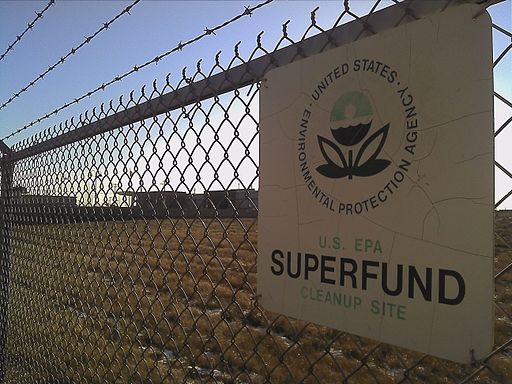Superfund Sites and How They Impact Veterans

CCK Law: Our Vital Role in Veterans Law
Superfund sites are areas of land designated by the United States Environmental Protection Agency (EPA) as contaminated by hazardous waste. Some veterans may have been stationed on military bases in the United States that are now designated Superfund sites.
What Are Superfund Sites?
A Superfund site is an area of land that is contaminated with hazardous waste which the EPA has designated for cleanup. The EPA places these sites on the National Priority List (NPL) for cleanup because they pose a risk to human health and/or the environment. The NPL lists all Superfund sites, and guides EPA to determine which ones need to be cleaned up. Once these sites are cleaned of the hazardous materials and deemed to no longer be a risk to human health or the environment, the EPA will open them for reuse.
How Do Superfund Sites Impact Veterans?
The NPL lists areas of land that held former chemical plants or areas where there was a toxic spill or leak, as well as former and active military bases.
What Military Bases are Listed as Superfund Sites?
There are numerous military bases, inactive and active, that are listed as Superfund sites. Some of the bases include Camp Lejeune in North Carolina, Dover Air Force Base in Delaware, and Wright-Patterson Air Force Base in Ohio.
Veterans can use the EPA’s Superfund website to search for Superfund sites.
What Contaminated the Bases?
According to EPA’s website, there are over 800 substances that are deemed as hazardous. The substances that are found on Superfund sites are designated by the Comprehensive Environmental Response, Compensation and Liability Information System (CERCLIS) as the following:
- “Causing or contributing to an increase in mortality or in irreversible or incapacitating illness, or
- Posing a substantial present or potential hazard to human health or to the environment when improperly treated, stored, transported, disposed of, or otherwise managed.”
Some of the harmful substances found on military bases include tetrachloroethane, arsenic, benzene, cyanide, and lead. EPA’s website shows the contaminants found at each site and what was contaminated, such as the groundwater, soil, or sediment.
What Are the Health Risks of Superfund Sites?
The specific health risks associated with a Superfund site depends on the contaminants that are there, as well as how much. For example, Camp Lejeune’s water supply was contaminated with Volatile Organic Compounds (VOCs) such as benzene, tetrachloroethylene (PCE), and trichloroethylene (TCE) that were thousands of times over the legal safety standards. Many of those who were exposed to the these harmful substances at Camp Lejeune later developed cancers such as adult leukemia and esophageal cancer, as well as neurobehavioral effects, female infertility, and renal toxicity.
However, each Superfund site varies in what contaminants were found and the levels of the contaminants, so potential health effects could vary depending on the base, when you were stationed there, and length of time spent on the base.
About the Author
Share this Post
